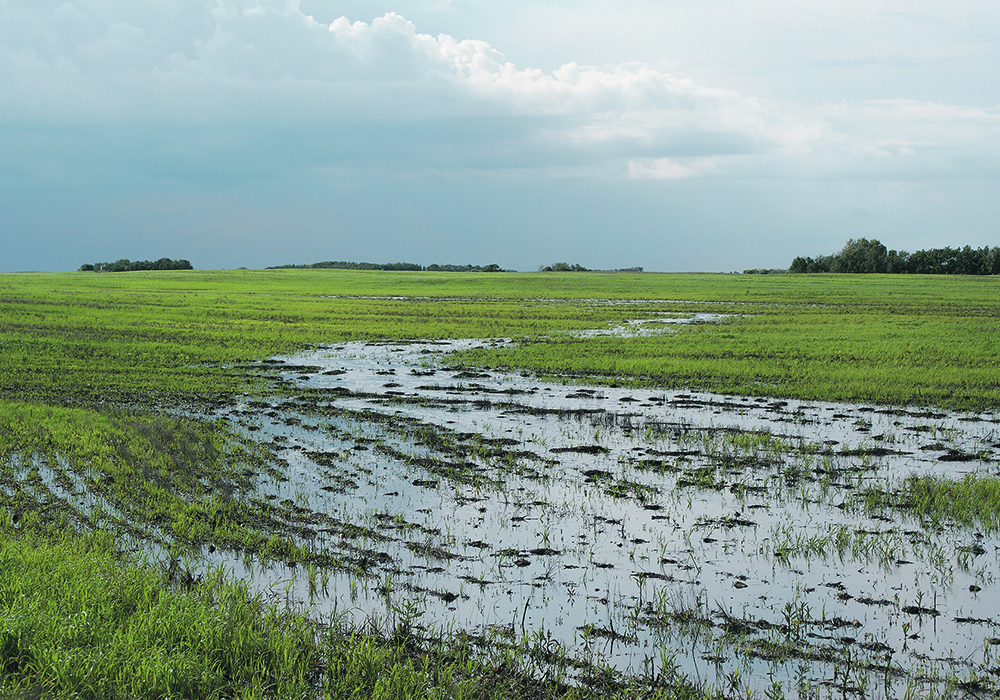Farmers in Portage la Prairie, Man., got a lot of insight into the philosophy and complexities of crop insurance when the Manitoba’s chief product officer described recent tweaks.
David Van Deynze sketched out a world in which unintended consequences, moral hazard and farmer psychology float amid the storms of weather volatility and regional variation.
Underlying everything is an attempt to get every farmer possible insured while not affecting farmers’ cropping decisions.
“We don’t want to be changing… what producers should be doing if there was no crop insurance,” said Van Deynze at Keystone Agricultural Producers’ fall policy meeting.
Read Also

Message to provincial agriculture ministers: focus on international trade
International trade stakeholders said securing markets in the face of increasing protectionism should be the key priority for Canada’s agriculture ministers.
“This is sort of that last resort, not the best-case scenario.”
Van Deynze was describing excessive moisture insurance, or EMI, which most farmers see as too-wet-to-seed insurance, but the careful balancing act between compensating farmers for losses and encouraging risky behaviour holds across most of what crop insurance attempts to achieve.
“EMI isn’t there to cover a lost opportunity cost. It’s about trying to cover the fixed costs of farming,” said Van Deynze.
“Trying to make sure you can afford to farm another day.”
Too-wet-to-seed insurance has recently been bumped up to cover the increased cost of farming, but to nowhere near a level that replaces the profit that a decent crop would bring.
“We don’t want a farmer to get to June 5 and say, ‘oh man, I’m not going to seed today because it might rain tomorrow and I’d rather get EMI than have to plant a crop of wheat,’” said Van Deynze.
“We don’t want EMI to get that high that it starts to weigh into their thought process.”
The drop-dead date for soybean seeding has been extended by a few days to better reflect new varieties and farming methods that make later seeding possible. Even though those dates and those for other crops go right into June, they don’t appear to be causing farmers to recklessly plant soybeans when it seems very late.
“Most farmers are targeting much early than what our datelines are,” said Van Deynze.
“It looks like producers either got (soybeans) in when they wanted to in the first place or abandoned the soybean idea and put in another crop they were more comfortable (with) this year.”
In 2022 soybeans fell to the fourth most popular crop in Manitoba, with oats moving up to take its place.
Seeding dates and soaked soils can whip curveballs at crop insurance programs, hardly mattering one year but being gigantic risk factors the next. The 2022 crop was seeded late, with about 70 percent seeded in the second half of May and first week of June, compared to 70 percent seeded in the last week of April and early May in 2021. In 2020 about 70 percent was seeded in the second and third weeks of May.
That range of seeding windows creates different risks and seeding calculations for farmers. It also creates much different risks for the crop insurance program run by agencies like the Manitoba Agricultural Services Corp. Just a few years ago, insured crop liabilities were about $3.3 billion, but in 2022 that hit $4.5 billion because of the bull market in crop prices.
That’s a volatile risk for an insurer to hedge.
Too-wet-to-seed sees a wild range. In 2005, 1.4 million acres were affected. In 2011, massive flooding prevented three million acres from being seeded. In 2014, almost one million acres couldn’t be seeded.
To many producers, 2022 seemed bad but the total affected acres were 890,000. However, premiums have gone up because of the lag effect from 2021.
Moral hazard is a constant concern for agricultural insurance. Will insurance provoke farmers to undertake reckless or irresponsible farming actions in attempts to game the program? That’s a step beyond simply being influenced by insurance levels and their impact on a farmers’ risk. Nobody wants to see any farmers farm the program rather than their fields.
Manitoba’s program is admired because of its high uptake among producers. That’s a success for farmers, but also for Manitoba’s provincial government. One of the driving forces behind governments’ support for crop insurance programs is so they can avoid having to make emergency payments in disaster years. Farmers, insurers and governments all have an incentive to make sure crop insurance is relevant and attractive to farmers, while not encouraging negative farming actions. It can’t be an easy balance to keep, but Manitoba seems to have got it right, so far.
















